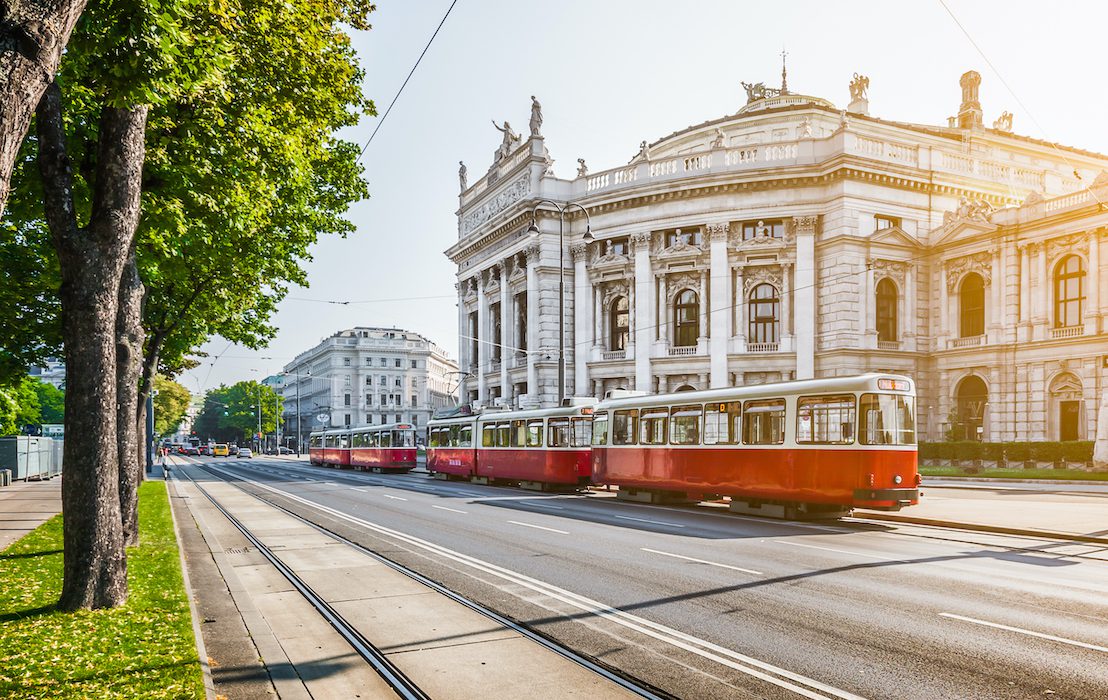Human Wellbeing: Good Urbanism Requires Good Architecture

If human beings really are a certain kind of creature, which is oriented to particular ends and flourishes under particular conditions, then an honest study of them ought to confirm that. The observations of history and the observations of modern science should agree about what sort of animal man is. When they are brought into apparent conflict, something has intervened.
I had the pleasure this week of moderating an event on urbanism co-hosted with The American Conservative by the National Civic Art Society. If you missed it, let me encourage you to watch the panel discussion, entitled “Authenticity, Beauty, and Human Wellbeing: Why There Cannot Be Good Urbanism Without Good Architecture,” in its entirety here on YouTube. The presentations and conversation were provocative and stimulating, with three architects sharing their responses to the prompt.
Nir Buras sketched a theory of architectural modernism that ties the movement to the ethical dissolution of the First World War and the Romantic interest in the sublime as an aesthetic experience of terror or anxiety. Our buildings are ugly because designers want them to be that way.
Michael Curtis painted a portrait of the human being as a creature of body and soul, and explained how it is that our built environment is a battlefield for a fight over an anthropology of eudaimonia and the soul, which can be suffocated and pushed out of our own self-conception by buildings that celebrate base efficiency or disorder. Our buildings are ugly because our culture wants them to be that way.
Ann Sussman detailed her biometric study of physiological responses to various urban arrangements and architectural features, showing how faceless buildings without windows or ornament induce biological symptoms of anxiety or dissociation, and arguing that modernism as an aesthetic movement is emergent from a generation of post-WWI PTSD and the influence of Autism Spectrum Disorder. Our buildings are ugly because neuropathologies have made some people tolerate them that way.
Though the speakers did not use this precise framing, their presentations were united by a recognition that there is something ecological about urbanism as it constructs a living environment, and that as technological creatures, humankind is both an animal with a nature and fit habitat and one that can shape itself. Architecture is, therefore, a mirror, in which we reflect the sort of being we are and wish to be back to ourselves. There cannot be good urbanism without good architecture because we are not rats content to run through mazes to find a treat at a finish line—we desire beauty, not just the optimal arrangement of basic resources. In our self-awareness we wish not just to live, but to thrive (the rat in the lab, poor vermin, agrees in the blood without knowing how to say so), to own and master the space around us.
The panel discussion reminded me that technology, though it has a certain internal tendency, is still a tool subject to human ends. Modernism in all its many expressions has celebrated the human being’s capacity to manipulate matter in ways subject only to the limits of human imagination, for good or ill, though it rejects that moral language as sentiment. All stands ready at hand. Humanity is then just one more part of what is being shaped by power, as modernist architects such as Le Corbusier make obvious, or as the behavioral science research by major Silicon Valley companies that Sussman highlighted puts in practice through advertising.
But the same tools that can be used to make you more likely to buy a new iPhone can also show us that we are what the classical tradition has long claimed us to be. We are political animals, that look first for and to faces to situate ourselves in the world. We wish to be in community, and we are most comfortable when the harmonies of the natural world are reflected in the environments we build for ourselves. The beautiful makes us happy, and points us to inquiry after the true and the good.
And so the classical tradition of architecture and urban design clears a space for the flourishing of the individual, for you and I to grow to fill, not as a mass but as a particular specimen. The architecture of fear or anxiety, that aestheticizes pain, that makes each man a rat or a bug in a nest of other rats and bugs, a colony of animal matter, is—as Buras mentioned during the panel—not just the product of modernism and the West’s suicide in the First World War, but has appeared throughout human history in cultures that celebrate death and evil. The Aztecs built their piles and gates of skulls at the bases of their pyramids, reminding the people that they were just more blood-soaked fodder for the violent feeding of the sun.
All that is true is true, and all truth is God’s truth. Conservatives of a fogey type have a tendency to react against modernity’s focus on the effectual truth—engineering—isolated from transcendent truth by dismissing the technological project it has produced entirely. The corruption and myopia of the scientific establishment and dogmatic scientism makes this even easier to justify. A certain kind of tactical misology is perfectly appropriate in response to misologists who claim to be servants of reason. But those who love truth, goodness, and beauty should not forget that Aristotle was a natural philosopher, and that Solomon wrote of the ants and the rock badgers. If we seek after and love wisdom we should not fear what knowledge will bring.
This New Urbanism series is supported by the Richard H. Driehaus Foundation. Follow New Urbs on Twitter for a feed dedicated to TAC’s coverage of cities, urbanism, and place.